My “trout” dry fly box
{{start}}
Dry fly fly fishing is very visual and at times can out fish all other methods. This selection of flies will cover most of your surface fly fishing requirements in both Australia and new Zealand.
{{end}}
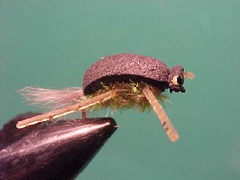
{{+1}}Foam beetle{{-1}}
{{start}}
Both floating and wet beetles (including drowned terrestrials beetles and aquatic beetles) should be fished in the current with as little line drag as possible or with a very short twitching action. A nondescript well tied beetle pattern if presented in the right way when fish have beetles on their menu, more often than not, will be accepted by fish. Consequently no fly box would be complete without a selection of beetle patterns.{{end}}
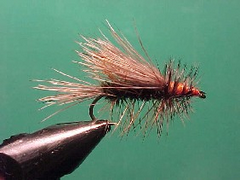
{{+1}}Stimulator variant{{-1}}
{{start}}
Whilst not tied to imitate any particular insect this down wing style of fly can be tied with your favorite materials and in your favorite colours to imitate a range of insects. It is a good prospecting fly when nothing appears to be happening. In larger sizes it can be twitched or fished dead drift to imitate a hopper, cicada or other terrestrial insect that has found itself in the water or in smaller sizes can be danced across the surface to imitate a caddis fly.{{end}}
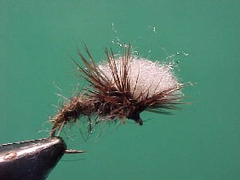
{{+1}}Klinkhammer{{-1}}
{{start}}
This Dutch fly designed for Grayling is one of the best emerger patterns and well suited when fishing to emerging mayflies and caddis. One of the big advantages of this pattern is that it is easily seen on the water because of the poly yarn post.{{end}}
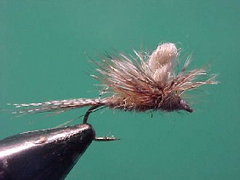
{{+1}}Para dun emerger{{-1}}
{{start}}
This is more of a class of flies rather than just a fly. Perhaps the best known Para Dun Emerger is the Parachute Adams. It was derived form the Adams Irresistible and whilst the Irresistible sits high on the surface film the parachute version sits comfortably in the film making it a very useful emerger pattern.{{end}}
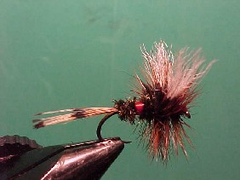
{{+1}}Hair winged royal coachman{{-1}}
{{start}}
I tie a few hair winged duns but don't tie them as representations of any particular Dun or Spinner (imago) stage of any specific insect. The Hair Winged Royal Coachman is an excellent example of a hair winged dun. It evolved from origins in England of the 1800’s.{{end}}
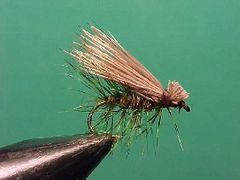
{{+1}}Elk hair caddis{{-1}}
{{start}}
When a caddis fly hatches it rises to the surface of the water, shedding its nest and shuck as it breaks through the surface tension of the water so as to reveal its wings. Caddis flies often use surface movement caused by wind and currents to assist in this process.{{end}}

{{+1}}Coch-Y-Bonddu{{-1}}
{{start}}
The Cock-Y-Bonddu is a Welsh beetle pattern which is equally at home on Australian trout waters. The original was tied with flat silver tinsel wound around the hook shank just behind the body. This little bit of flash isn't intended to represent a tail its more likely that it was included to imitate the beetle wing parts that often trail behind a beetle like a tail when it gets trapped in the water mid flight.{{end}}

{{+1}}Red and orange spinner{{-1}}
{{start}}
The term 'spinner' refers to that stage in a Dun's life cycle when it has moved off the water or, vegetation etc. after drying its wings. The adult or imago of all Mayflies, Caddis flies and Midges can technically be regarded as spinners. The following Spinner is a generic representation for members of the “Leptophlebiidae” family of Mayflies and the various Highland Duns & Spinners, which are members of the “Oniscigastridae” family. Hatches generally occurs between the months of October and March. Carry black, brown, red and blue damsel versions.{{end}}

{{+1}}Irresistible{{-1}}
{{start}}
The Adams Irresistible is just one representation of a Baetis Dun. It floats like a cork and what's more fish accept it as a variety of food items. In smaller sizes it is an excellent Baetis Dun imitation and an excellent fly in still water particularly when Snow Flake Caddis are about. In larger sizes it is an excellent fly for fast water or as a top fly in dry / nymph combination. Change the material colours to tie flies representing Baetis Duns in your target fishery. I carry Adams, black, brown and olive versions in a couple of sizes.{{end}}

{{+1}}Lepto Dun{{-1}}
{{start}}
I use this fly to represent mayflies that are members of the Leptophlebiidae classification of mayflies which includes the Highland Dun and Olive Dun and also the Kosciuszko Dun which is a member of the Coloburiscidae classification of the Mayfly family.{{end}}













